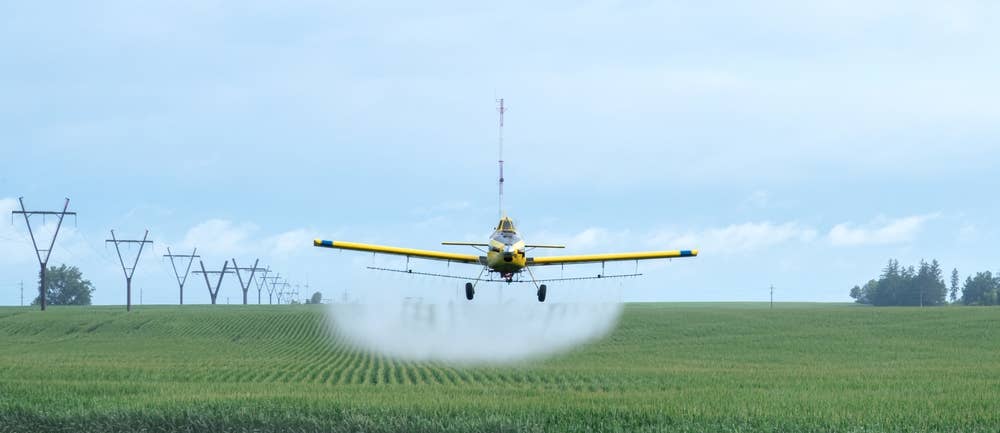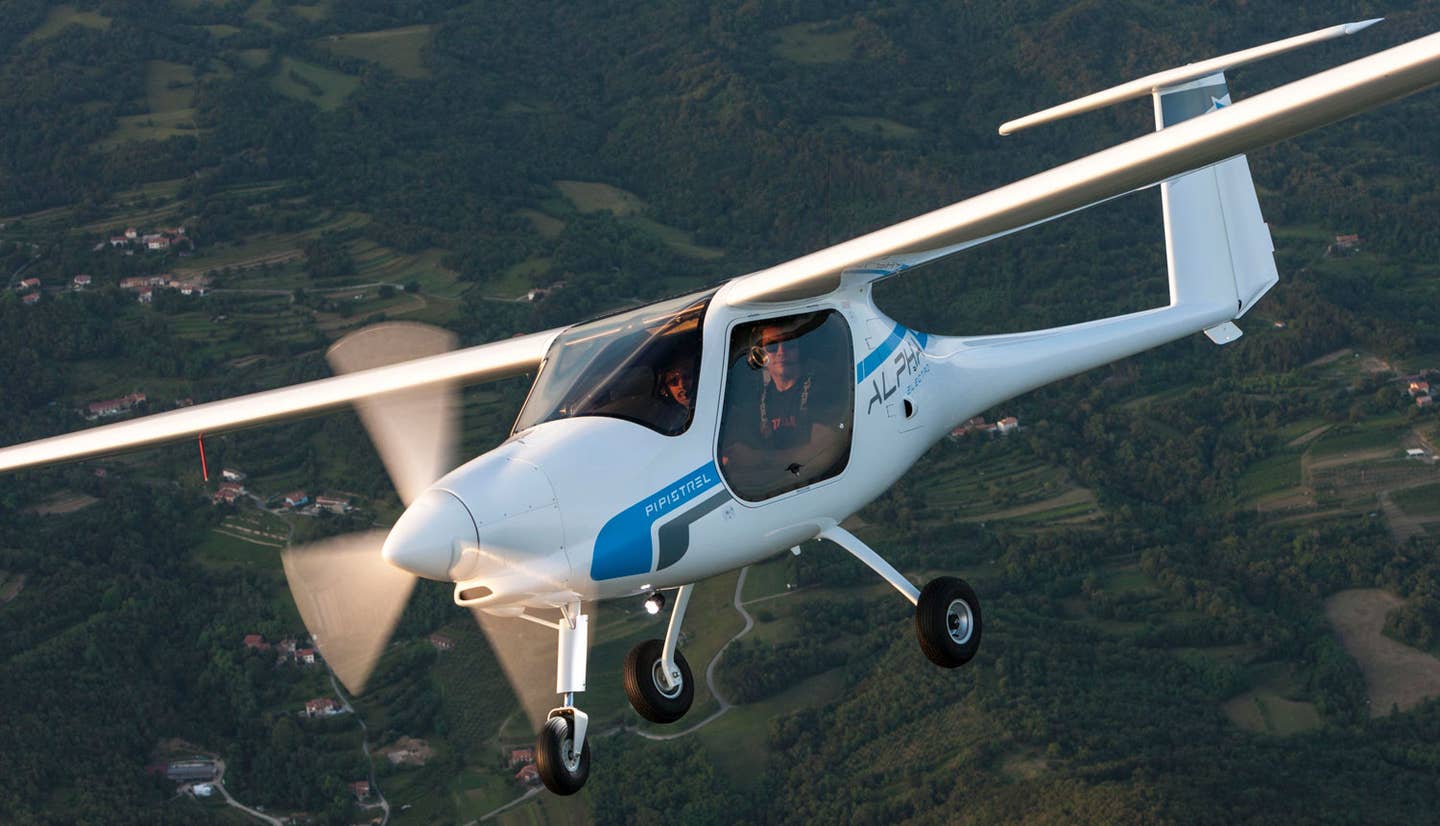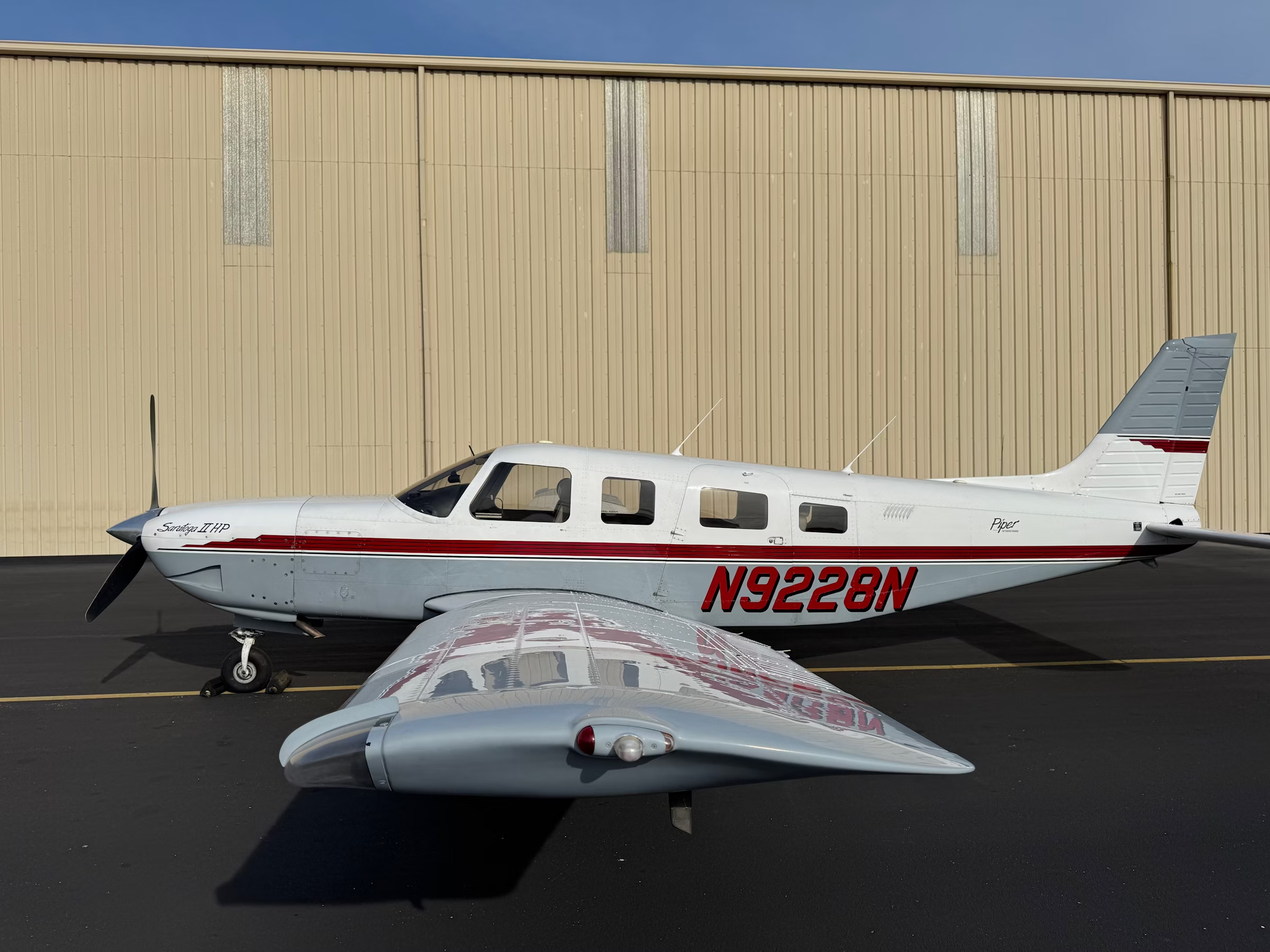History of Agricultural Aviation Reveals a Series of Turning Points
Industry’s growth has been marked by interesting watershed moments.

Agricultural aviation has evolved from a seat-of-the-pants flying job to a high-tech, precision industry. [Credit: Shutterstock]
On August 3, 1921, a Curtiss JN-6 “Jenny” took off from the now defunct McCook Field in Dayton, Ohio, and headed to the nearby town of Troy, where an infestation of catalpa sphinx moths threatened to destroy a grove of catalpa trees. The trees were valuable for their wood, which made good railroad ties, telephone poles, and fence posts.
John Macready, an Army test pilot who flew fighters in World War I, was at the controls. In the rear cockpit was Etienne Dormoy, a research engineer with the Army Signal Corps who had modified the Jenny for this experimental assignment.
As Macready skimmed the treetops, Dormoy turned a crank on a metal hopper bolted to the side of the fuselage, releasing lead arsenate dust. After six passes, the job was done, the grove was saved, and an industry called “crop dusting” was born.
That industry, now known as agricultural aviation or aerial application, moved along an interesting path to advance from Macready and Dormoy’s 150-hp Jenny with a 32-gallon hopper to modern machines like the Air Tractor AT-802A, whose turbine engine generates 1,295 hp—enough to lift the load induced by its 800-gallon hopper.
While this tale of evolution in some ways resembles that of other aviation segments, like airlines, business and military aircraft, it is sprinkled with watershed moments worth particular attention.
Dusting Catches On
Crop dusting grew rapidly following the Troy, Ohio, experiment, with many pilots adapting existing aircraft for the task. Huff-Daland, an aircraft company that supplied trainers for the military, in the early 1920s designed a biplane especially for crop dusting, which they nicknamed The Puffer. The company formed an agricultural division called Huff-Daland Dusters, and began commercial dusting operations with its specialized airplanes in 1925, according to the National Agricultural Aviation Association (NAAA).
At the time, the company’s fleet of 18 aircraft was the largest privately owned fleet in the world, according to Delta Air Lines. Huff-Daland, through a number of acquisitions, grew into Delta Air Service and, by 1945, officially became Delta Air Lines.
Enter the Stearman
The end of World War II created a breakthrough for crop dusters for a couple of reasons. First, the enormous surplus of Stearman trainers, many in like-new condition, meant they could get reliable, robust aircraft at low prices—from $250 to $875, the NAAA said. Because all of these surplus aircraft had to be modified for agricultural use, specialized companies formed to outfit airplanes with dusting and spraying equipment. This brought a degree of standardization and efficiency that helped accelerate the industry’s growth.
The 1950s: New Models, Rising Standards
A team at Texas A&M led by aircraft design legend Fred Weick built the AG-1, a prototype monoplane crop sprayer, in 1950. The following year, Leland Snow, who later developed Thrush agricultural aircraft and founded Air Tractor, rolled out his first design, the S-1. By 1953, Piper was building the Pawnee. These aircraft all shared the distinctive raised cockpit, sloped nose and low wing that became standard for ag-plane design. Indeed, industry insiders often draw parallels between the AG-1 and the latest Air Tractor.
Just as the template seemed to be set, though, aviation giant Grumman introduced its G-164 Ag-Cat, a radial-engined biplane, in 1957. It was the first agricultural airplane from a major manufacturer and it significantly raised standards for reliability and safety.
A Fragmented Industry Comes Together
In 1966, new federal regulations under Part 137 imposed new restrictions on agricultural aviation. This and a number of other factors, from the subdivision of farms into suburbs to the release a few years earlier of Rachel Carson’s Silent Spring—a book that criticized pesticide use—helped drive independent-minded crop sprayers to form the National Agricultural Aviation Association, or NAAA, in late 1966.
Turbine Power Arrives
While Pratt & Whitney unveiled the first PT6 turbine engine in 1957, almost 20 years passed before the powerplants turned up on the noses of ag aircraft. According to the NAAA, the first example to fly in the U.S. was the Turbo Cat, a converted Ag-Cat that took to the air in 1976. It was about 60 percent more productive than the piston version and marked the beginning of a turbine ascendancy in crop spraying.
GPS Replaces Flaggers
Remember how expensive GPS technology was at first? In 1993, when it became commercially available, many people in agricultural aviation recognized its potential but felt the price tag, often tens of thousands of dollars, would deter most operators. However, within a year, 25 percent of the industry was using GPS, the NAAA said, mainly because it increased accuracy by a huge margin just as environmental concerns were focusing more scrutiny on crop spraying. Before GPS, workers would stand in the field with flags on long poles to guide the airplanes. They would have to lower the poles at just the right time so the airplane would not hit them.
Unlikely Pop-Culture Phenomenon
In 2013, Disney released Planes, an animated film along the lines of the 2006 film, Cars, about Dusty Crophopper, an agricultural airplane that dreams of air racing. With a sequel the following year, in which Dusty takes up aerial firefighting, the franchise arguably gave agricultural aviation its most notable screen presence since the 1959 film North By Northwest.
What About Drones?
As agricultural aviation looks to a future of expected growing populations and shrinking farmland, it is clear that efficiency, sustainability, and cost will affect how ag pilots operate. Unmanned aircraft systems have been part of crop spraying for years, but it remains unclear how far their roles might expand and whether they will remain largely as pilot aids or lead to levels of automation that begin to squeeze pilots out of the business.

Sign-up for newsletters & special offers!
Get the latest FLYING stories & special offers delivered directly to your inbox






